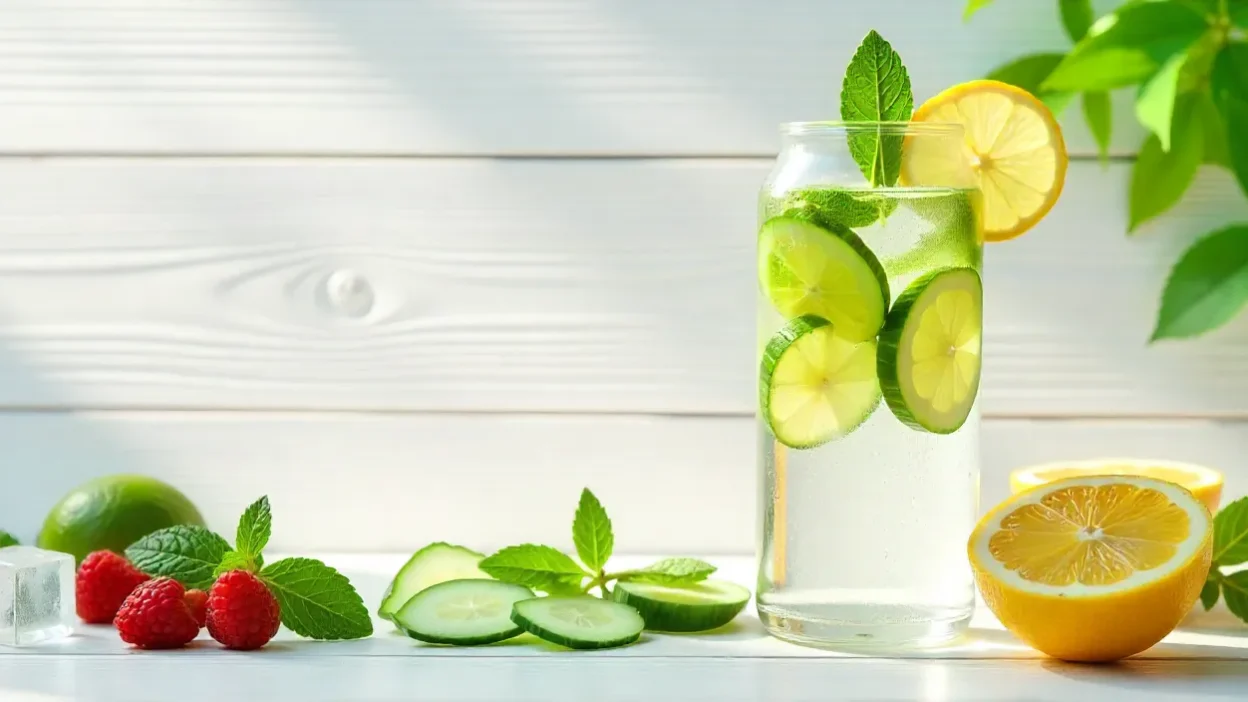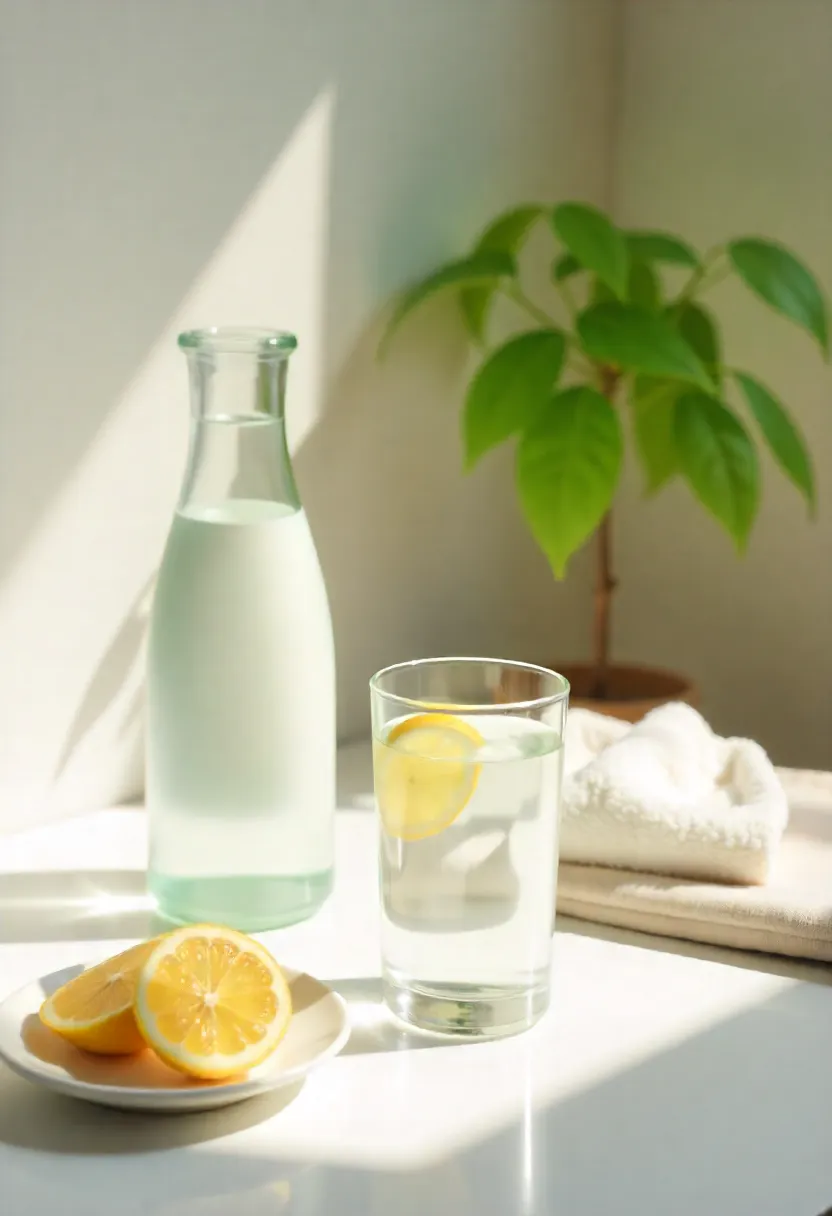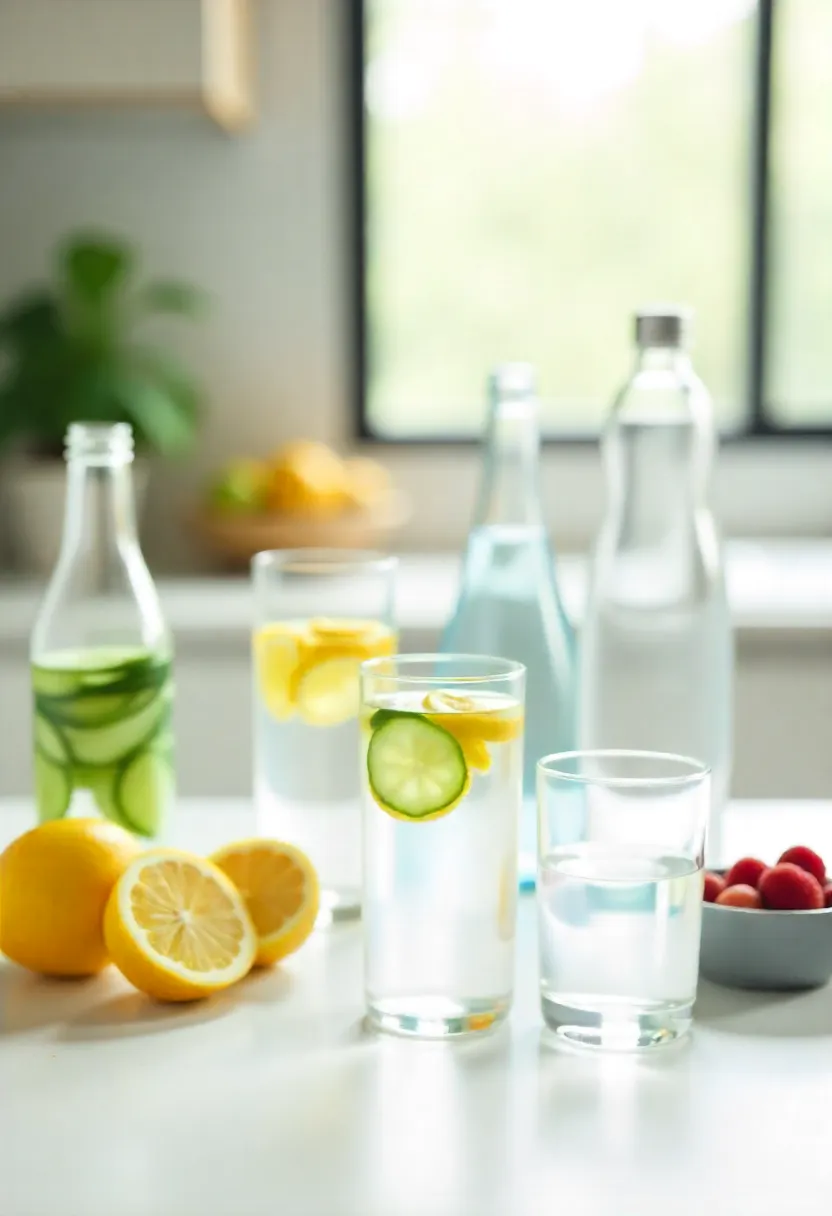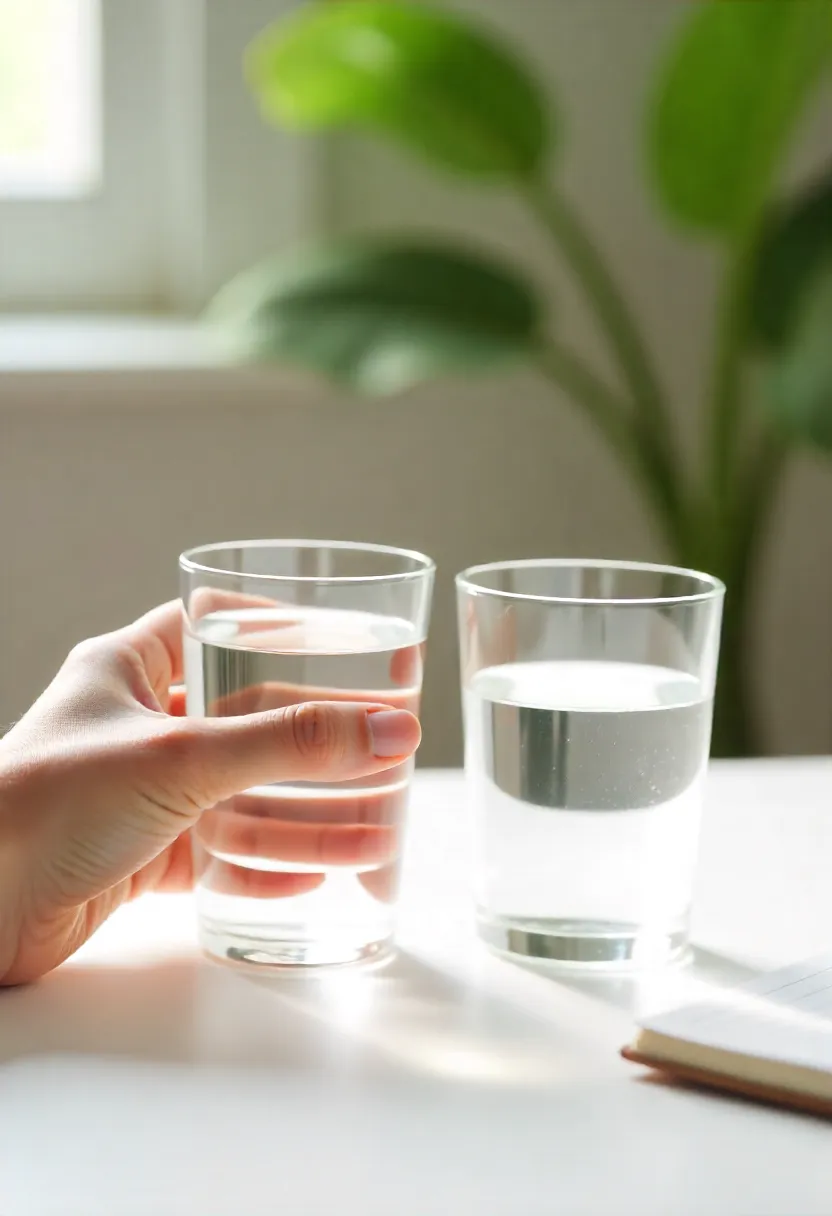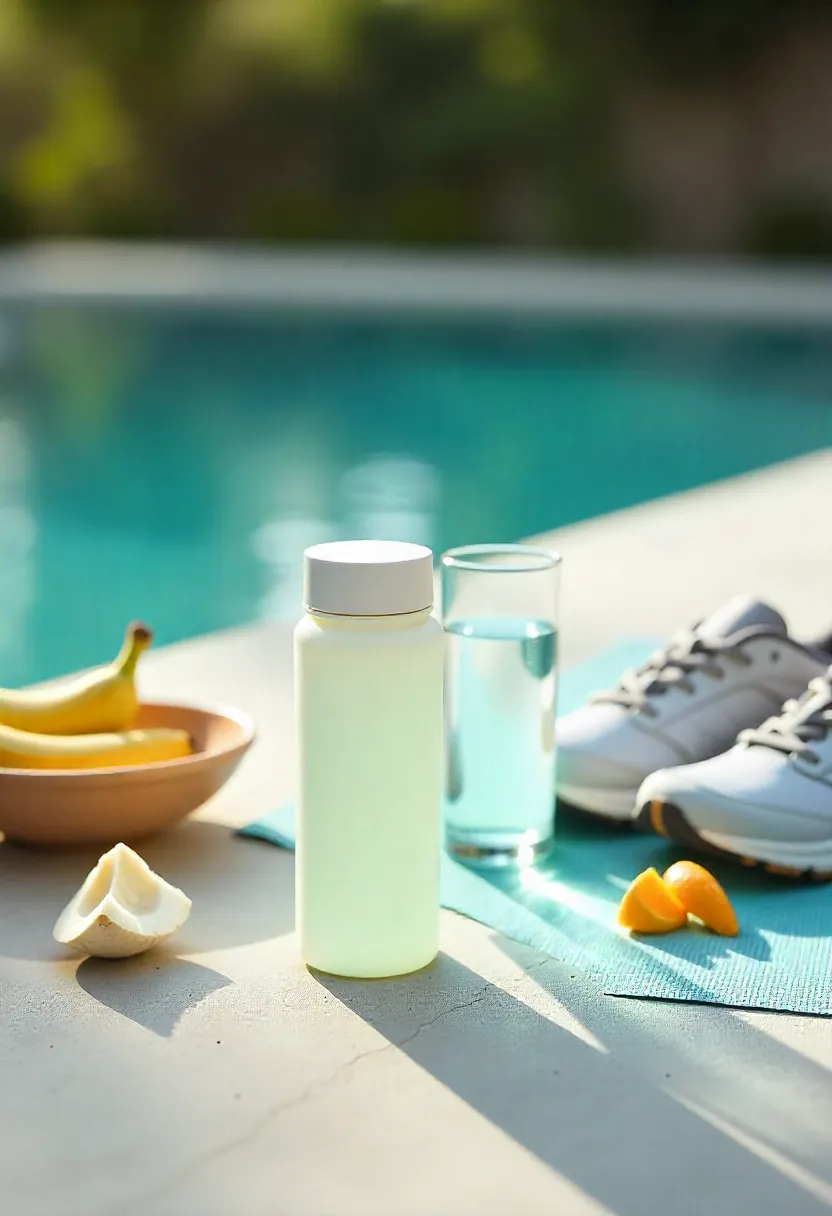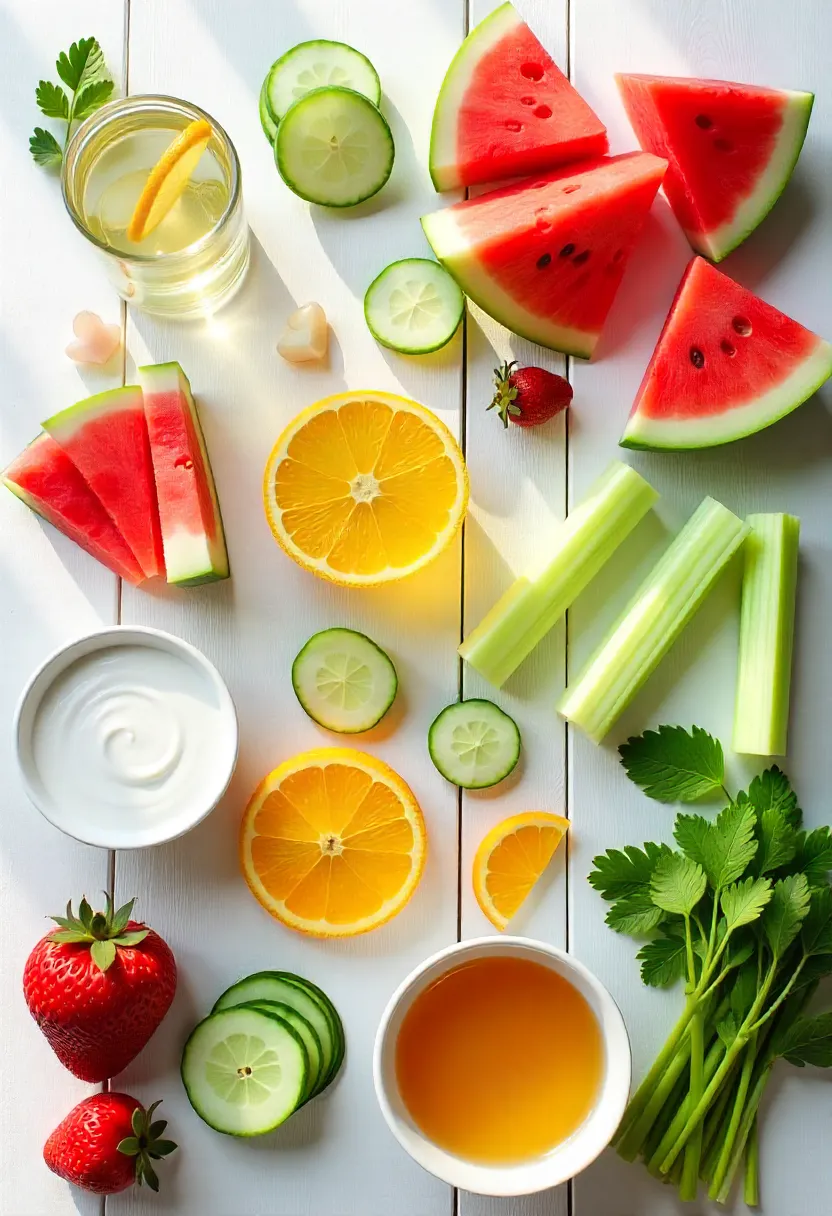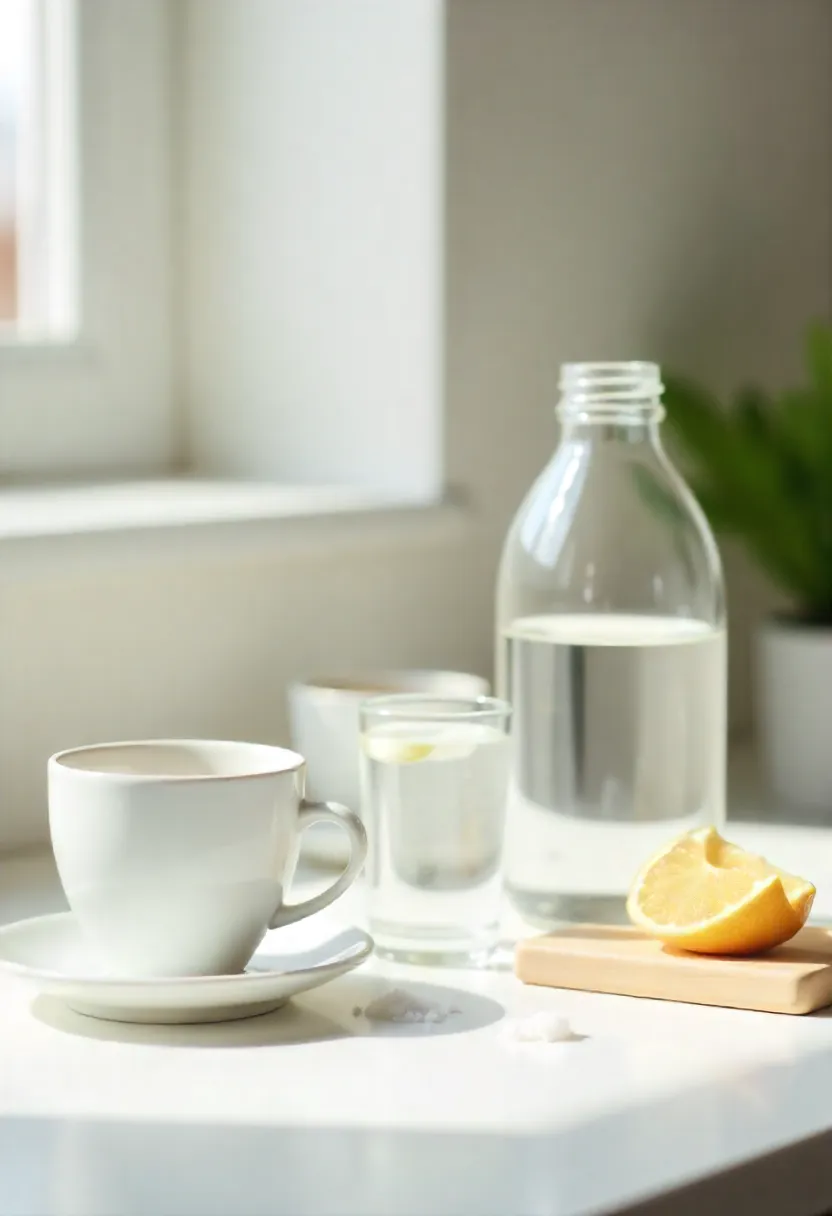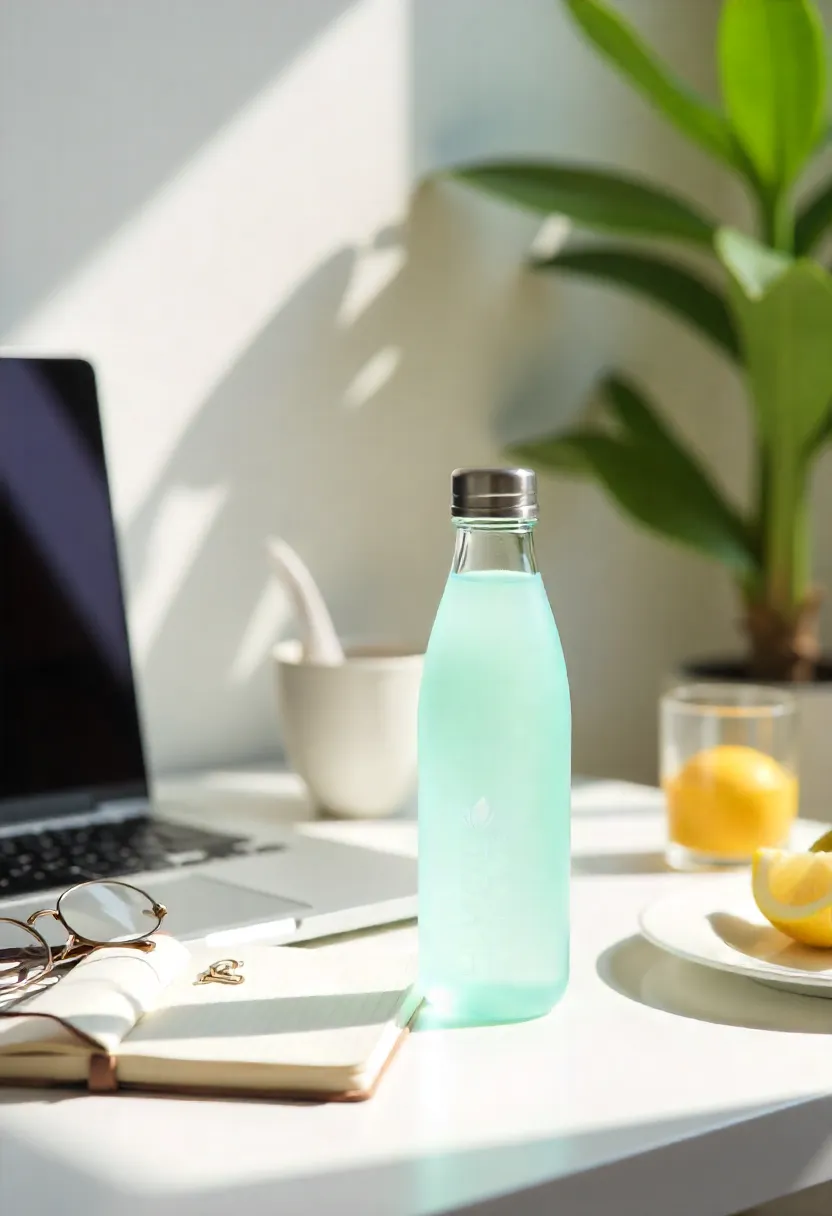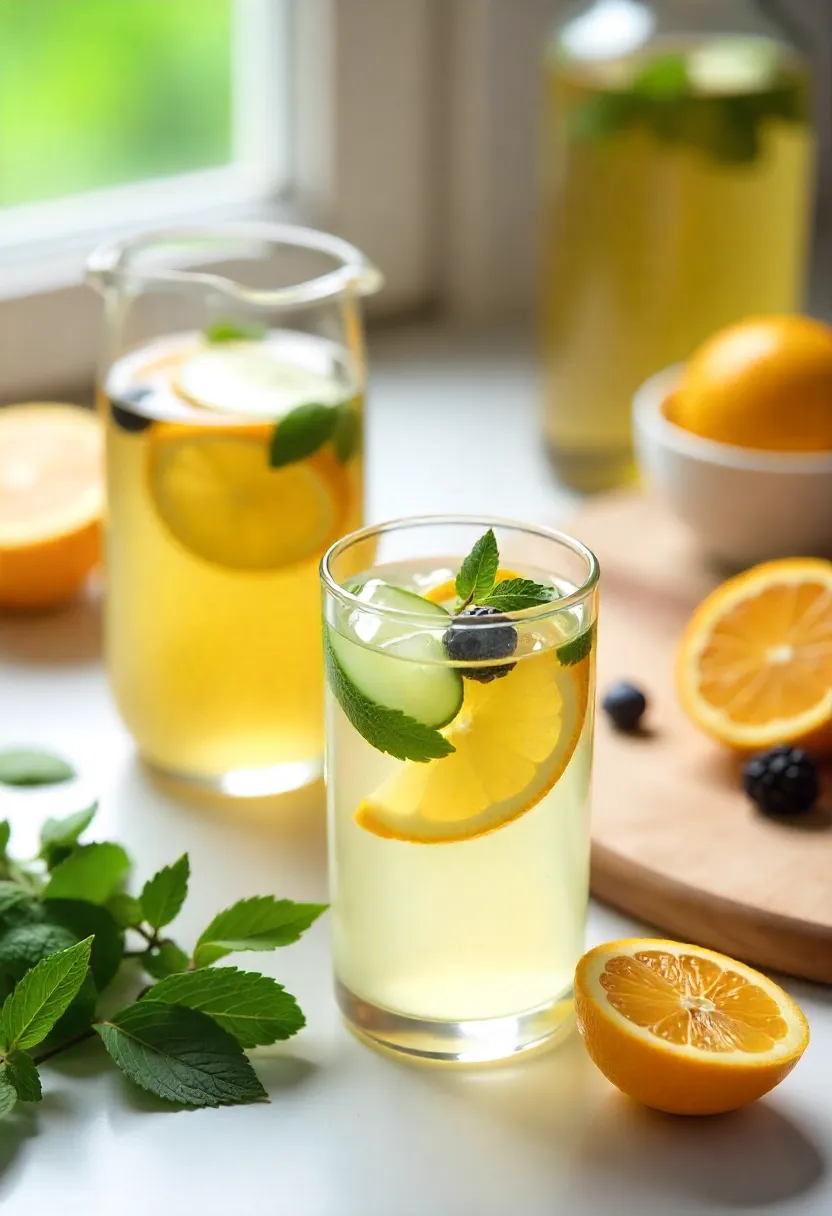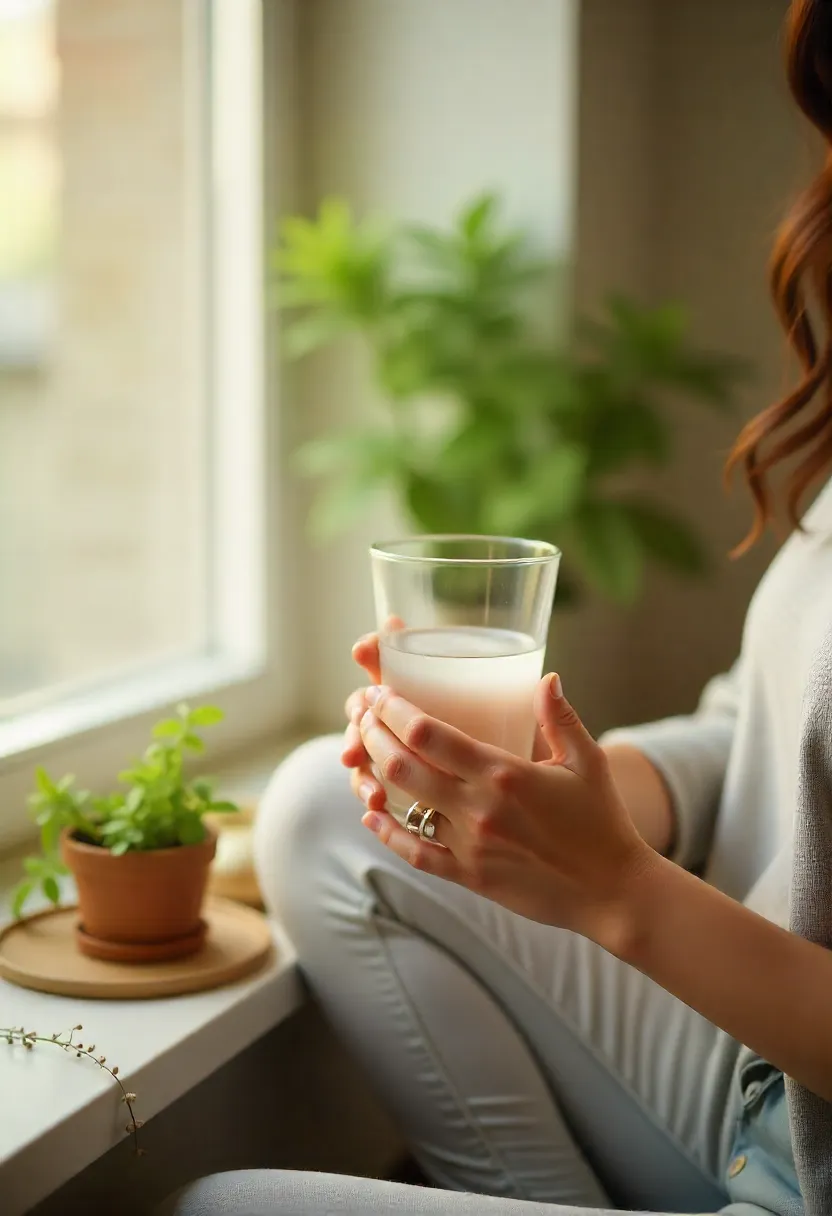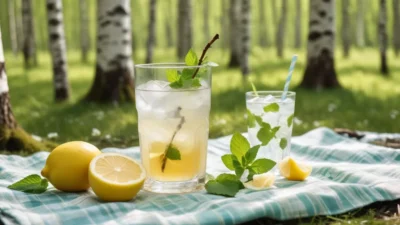Contents
- Introduction: Why Water Matters More Than You Think
- How Much Water Do You Really Need?
- Signs You’re Well-Hydrated vs. Dehydrated
- Hydration for Active Lifestyles
- Foods That Keep You Hydrated
- Common Mistakes People Make With Hydration
- Smart Hydration Habits to Build Daily 💧
- Quick Healthy Drinks & Infused Water Ideas
- Conclusion: Hydrate Your Way to a Healthier You
Introduction: Why Water Matters More Than You Think
Water isn’t just a habit — it’s your body’s foundation. Every cell, muscle, and organ relies on hydration to function at its best. From sharper thinking and glowing skin to stable energy and smoother digestion, proper hydration can transform the way you feel every single day.
Yet with so much mixed advice (eight glasses? liters? thirst cues? electrolyte drinks?), staying hydrated can feel more confusing than it should. The truth is simple: there’s no one-size-fits-all formula. Your ideal water intake depends on your lifestyle, environment, body needs, and daily habits.
This guide cuts through myths and trends to help you understand how much water you truly need — and how to make hydration effortless, enjoyable, and part of your everyday rhythm. Because when you hydrate with intention, you don’t just drink… you thrive.
How Much Water Do You Really Need?
You’ve probably heard the classic “8 glasses a day” rule — and while it’s a decent starting point, it’s not the whole story. Your hydration needs are personal, shaped by your body, routine, and even where you live. Someone who works at a desk in a cool climate will need far less than someone who trains outdoors in summer heat.
A clearer way to think about it?
Hydration is about balance, not a magic number.
Most adults thrive with roughly 2–3 liters (about 8–12 cups) a day, but that total can come from more than water alone. Herbal tea, fruits, vegetables, smoothies, and even soups all contribute. What’s most important is noticing how you feel — not just counting glasses.
Your body gives you signals long before dehydration becomes obvious: sluggishness, dry mouth, dull skin, foggy thinking. Learning to recognize those cues (and respond early!) matters far more than chasing a strict quota.
Instead of asking “How much should I drink?” try:
“How can I help my body stay comfortably hydrated today?”
Hydration isn’t a chore — it’s a daily kindness to yourself.
Signs You’re Well-Hydrated vs. Dehydrated
Your body is smart — it communicates long before dehydration turns into thirst desperation. The trick is learning to listen.
When you’re well-hydrated, everything feels smoother: your mind stays sharp, energy comes easier, digestion is more comfortable, and even your skin looks calmer and more radiant. Hydration is subtle, but its benefits quietly shape your day.
On the flip side, early dehydration isn’t dramatic — it creeps in. A mild headache, that mid-afternoon energy crash, feeling “foggy,” or noticing your lips and skin feel a little dry can all be gentle nudges from your body. Thirst is actually a late signal — by the time you feel truly thirsty, you’re already behind.
One simple cue people overlook? Urine color. It doesn’t have to be clear — just a pale, straw-like shade most of the time. Dark, concentrated color (especially paired with low energy or dizziness) means your body needs a hydration boost.
The goal isn’t obsessing — it’s awareness. Let your body guide you. Hydration is as intuitive as hunger and rest; you just have to pause and pay attention.
Hydration for Active Lifestyles
When you move more, you need more — hydration included. Sweat isn’t just water leaving your body; it’s also minerals like sodium and potassium that help your muscles fire and your brain stay sharp. That’s why active days demand a little extra attention to how and what you drink.
If you exercise lightly — a walk, yoga, pilates — water alone is usually perfect. Sip before, during, and after to stay comfortably hydrated without overthinking it. But on days filled with intense workouts, long runs, hot weather training, or anything that leaves your clothes damp with sweat, your body may need electrolytes, not just water.
This doesn’t automatically mean bright-colored sports drinks. You can replenish minerals naturally through coconut water, a squeeze of lemon with a pinch of sea salt, or foods rich in potassium and magnesium like bananas, yogurt, leafy greens, and nuts. If you do prefer electrolyte mixes, look for low-sugar options with balanced minerals instead of artificial dyes and sweeteners.
The key balance: drink proactively, not in a panic. Take consistent small sips instead of gulping huge amounts at once. Hydration shouldn’t feel forced or frantic — just a smooth, supportive rhythm that keeps your body fueled and performing at its best.
Foods That Keep You Hydrated
Drinking water isn’t the only way to stay hydrated — in fact, your plate can contribute more than you think. Many whole foods are naturally water-rich, delivering hydration plus vitamins, minerals, fiber, and antioxidants your body thrives on.
Think juicy fruits like watermelon, oranges, and berries; crisp vegetables like cucumber and lettuce; and cooling foods like yogurt or cottage cheese. Soups, smoothies, and herbal teas also count — so if plain water feels repetitive sometimes, you have plenty of delicious options.
Hydrating foods don’t just boost water intake — they help your body hold onto it, thanks to electrolytes like potassium and magnesium naturally found in produce. A bowl of sliced cucumber and melon on a warm afternoon or a veggie-packed soup on a cozy evening can work wonders without you realizing you’re “hydrating.”
And here’s a fun truth: sipping herbal tea, enjoying a smoothie, or snacking on fresh fruit feels more like treating yourself than checking a wellness box — hydration becomes pleasure, not pressure.
So next time you think about drinking more water, start by adding color to your plate. Your body (and taste buds) will thank you.
Common Mistakes People Make With Hydration
Even with the best intentions, staying hydrated can get tricky — and sometimes, good habits go just a little too far. One of the most common mistakes? Treating water like a challenge instead of a gentle, steady routine. Overloading your system with huge amounts at once can actually flush out important minerals, leaving you feeling dizzy or fatigued — hydration should support your body, not overwhelm it.
Another misconception is believing that coffee or tea “don’t count.” Yes, caffeine has a mild diuretic effect, but your morning latte still contributes to your daily fluid intake. There’s no need to fear your favorite cup — just balance it with water throughout the day. Similarly, many people assume sparkling water dehydrates you — in reality, it hydrates just as well as still water (as long as you’re choosing unsweetened varieties).
A sneaky pitfall? Forgetting about electrolytes altogether. Drinking only plain water, especially on hot days or during workouts, can leave you feeling oddly thirsty or low-energy because your body also needs sodium, potassium, and magnesium to stay balanced.
The secret isn’t perfection — it’s awareness. Hydration isn’t about chugging constantly or avoiding every beverage but water; it’s about finding a natural rhythm that makes you feel good, energized, and nourished.
Smart Hydration Habits to Build Daily 💧
Staying hydrated doesn’t have to mean tracking liters or obsessively refilling your bottle — it’s about weaving water into your day in ways that feel natural and enjoyable. Start your morning with a glass of water before anything else; it’s a simple ritual that wakes up your system and sets the tone for the day. From there, think of hydration as a gentle rhythm rather than a task list.
Keeping a reusable bottle within reach — on your desk, in your bag, beside your bed — turns water into an easy habit, not an afterthought. If you struggle to remember to drink, try pairing water with routine moments: a few sips every time you check email, stand up from your desk, or return from the kitchen. These little cues build effortless consistency.
And don’t underestimate the power of flavor. Adding lemon, berries, mint, cucumber, or herbs can transform water into something refreshing and enticing, especially if you’re someone who gets bored with plain sips. Herbal teas and sparkling water can count too — variety keeps things interesting and sustainable.
At its heart, hydration is self-care, not self-policing. Small, thoughtful habits turn water into a daily wellness ritual — not a chore.
Quick Healthy Drinks & Infused Water Ideas
Water doesn’t have to be plain to be powerful. Sometimes, a hint of flavor or a touch of natural sweetness is all it takes to turn hydration from a checkbox into a pleasure. Think simple, fresh, effortless combinations that feel spa-worthy — no sugar syrups, no complicated prep, just ingredients that make water more exciting and satisfying.
Try dropping a few fresh berries, cucumber ribbons, citrus slices, or mint sprigs into your bottle and let nature do the work. Lemon + ginger for morning energy, cucumber + mint for afternoon refreshment, berries + basil for something playful and fragrant — each mix adds subtle flavor and nutrients while keeping things light and refreshing.
Smoothies can also double as hydration and nourishment: blend frozen fruit, leafy greens, a splash of coconut water or almond milk, and you have a drink that hydrates while feeding your body. Herbal teas — iced or warm — are another effortless way to mix hydration with comfort.
If you’re ever craving electrolytes but don’t want artificial drinks, squeeze fresh citrus into your water, add a pinch of sea salt, and drop in a few berries or watermelon cubes. It’s nature’s sports drink, no neon colors required.
Hydration should taste like something you look forward to — bright, clean, and full of life.
Conclusion: Hydrate Your Way to a Healthier You
Staying hydrated isn’t about rules, numbers, or forcing yourself to chug liters at a time — it’s about learning what your body needs and supporting it with kindness and consistency. Water fuels your energy, keeps your mind sharp, cushions your joints, and even brings your skin to life. It’s one of the simplest daily habits with one of the biggest payoffs.
The goal isn’t to be perfect — it’s to be aware. Notice how you feel, sip throughout the day, and treat hydration like a steady rhythm instead of a pressure game. Make it enjoyable with fresh flavors, nourishing drinks, and moments of pause. When hydration becomes a ritual, not a chore, your body responds with clarity, comfort, and quiet strength.
Drink to fuel your days. Drink to feel good. Drink to thrive — not just survive.
Because the more you support your body, the more it supports you. 💧❤️

